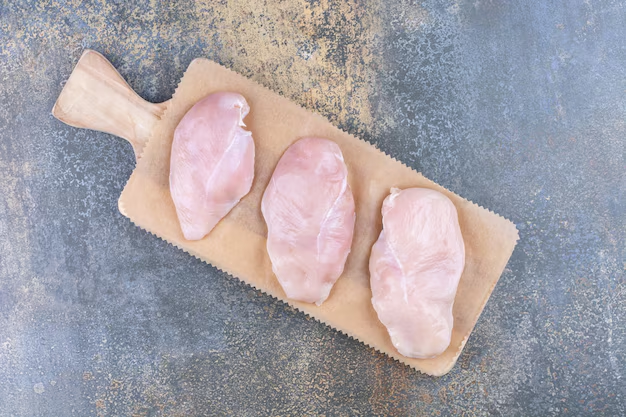Keeping It Fresh: Your Essential Guide to Storing Raw Chicken in the Refrigerator
Storing raw chicken safely is a cornerstone of great cooking and food safety. Whether you're planning a culinary masterpiece or a simple weeknight meal, knowing how to properly store your raw chicken can make all the difference in maintaining its freshness, flavor, and safety. Let’s unfold the essential steps and tips for keeping your chicken fresh and your meals delicious.
The Importance of Proper Chicken Storage
Why should we pay particular attention to how we store raw chicken? Safety is key. Poultry is notorious for harboring bacteria such as Salmonella and Campylobacter. Proper storage minimizes the risk of bacterial contamination, which can lead to foodborne illnesses. More than ensuring safety, correct storage methods can also help retain the chicken's flavor and nutritional value.
🐔 Why It Matters
- Minimize Contamination Risks: Reduces the possibility of bacteria spreading.
- Preserve Freshness: Maintains taste and nutritional content.
- Optimize Longevity: Extends shelf life even before cooking.
Preparing Raw Chicken for Refrigeration
Before stashing your chicken in the fridge, some quick prep work can go a long way. Proper handling and packaging are your first line of defense against spoilage and contamination.
Unpack and Rinse (Carefully)
Upon opening the packaging, some debate exists around rinsing chicken. While some perspectives suggest rinsing can help remove potential bacteria, others warn it may spread bacteria around your kitchen. If you choose to rinse, do so cautiously, making sure to disinfect your sink and surrounding area immediately afterward.
Portion and Package Wisely
When ready to store:
- Section into Portions: If you've bought a whole chicken or a bulk pack, portion it according to your meal plan. This helps in using only what you need without exposing the entire package each time.
- Wrap Tightly: Use airtight packaging like zip-top bags or wrap the portions tightly with plastic wrap. This not only prevents leakage but also reduces the chance of freezer burn if you opt to freeze.
Labeling: A Storage Best Practice
Labeling is a simple yet effective way to manage your fridge contents better. A marked date ensures you use the older products first, adhering to a "first in, first out" method of inventory.
Setting the Right Environment in Your Refrigerator
Having the right temperature and organization in your refrigerator can extend the life of your chicken and enhance food safety.
Optimal Temperature Settings
Maintaining a refrigerator temperature at or below 40°F is critical. Invest in a fridge thermometer if your appliance doesn't have a digital readout, so you can monitor and adjust as needed.
Organize for Safety
- Store at the Bottom: Keeping raw chicken on the lowest shelf is crucial. It prevents any drippings from contaminating other foods.
- Separate from Ready-to-Eat Foods: Use separate compartments or allocate specific areas for meats to avoid cross-contamination with foods ready to be consumed.
Quick Tips for Refrigeration 🕒
- Store raw chicken for up to 1-2 days before cooking or freezing.
- Avoid overcrowding your fridge for better air circulation.
Recognizing Freshness and Spoilage
Understanding when your chicken is no longer safe to eat is vital:
Signs of Fresh Chicken
- Color: Should have a pink, fleshy appearance with no discoloration.
- Texture: Firm to the touch and not slimy.
- Smell: Minimal, fresh scent without a sour or ammonia-like odor.
Detecting Spoilage ❌
- Off-Color: Greyish hues are a warning sign.
- Sticky or Slimy Texture: Indicates the start of spoilage and bacterial growth.
- Unpleasant Odor: A sharp or bitter smell is a definite no-go.
Extending Shelf Life with Freezing
Freezing is an excellent option when you want to extend the lifespan of your chicken beyond a couple of days.
The Freezing Process
- Wrap It Right: Before freezing, ensure packaging is airtight. Vacuum sealing is highly effective.
- Freeze Promptly: The sooner you freeze after purchasing, the better you'll preserve quality.
- Use the Deep Freeze Setting: Keep the freezer at 0°F or below for optimal storage.
Defrosting for Best Results
- Thaw in the Refrigerator: Plan ahead to allow ample time for safe, slow thawing.
- Avoid Counter Thawing: Reduces the risk of bacterial growth during exposure to warmer temps.
- Cold Water Thawing: As a faster alternative, submerge the sealed package in cold water, changing it every 30 minutes.
Practical Tips for Safe Dealing with Raw Chicken
Handling raw chicken involves more than just storage. Follow these tips to maintain safety and hygiene in your kitchen:
The Dos and Don'ts of Chicken Handling
🗹 Do:
- Use dedicated cutting boards for raw chicken.
- Wash hands with soap and warm water before and after handling.
- Sanitize utensils and surfaces post-preparation.
✘ Don't:
- Use the same knife for vegetables and chicken without washing.
- Thaw chicken on counters.
- Reuse marinade used on raw chicken unless boiled.
Key Takeaways for Chicken Storage 📝
- Temperature Control: Keep your fridge at 40°F or below.
- Secure Packaging: Airtight seals prevent spoilage.
- Placement Strategy: Raw chicken should reside on the bottom shelf.
- Regular Monitoring: Keep an eye out for spoilage indicators.
Freshness Checklist 📋
- Use within 2 days if refrigerated.
- Ideal freezing time is within a few hours post-purchase.
- Thaw in monitored cold environments only.
By incorporating these strategies into your kitchen routine, you can maximize the shelf life of your raw chicken and ensure every meal is both safe and satisfying. Keeping your ingredients fresh isn't just about avoiding waste—it's about enhancing the culinary experience and maintaining the highest food safety standards. So, the next time you plan a dish, remember these tips to keep everything fresh, delicious, and hazard-free.
